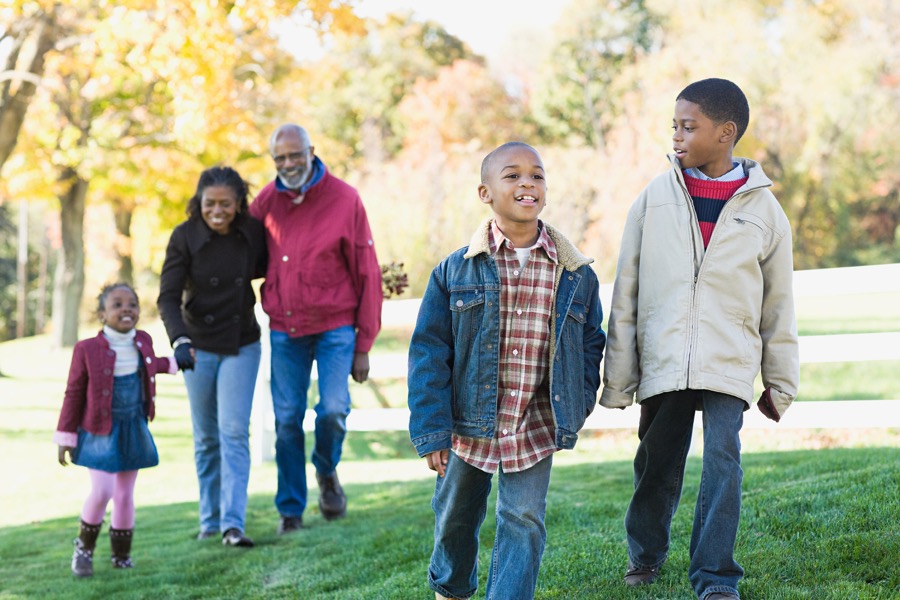Some of my readers may be wondering at this point, Why only boys? Why not also consider the needs of girls? The answer is that boys, even more than girls, are in serious trouble today. We have been hearing for three decades about girls being discriminated against, sexually harassed, disrespected, and given short shrift in school. There is some validity to those assertions, and steps are being taken to address them. But a chorus of social scientists is warning now of a crisis among males like nothing we have seen before. While many kids are coping adequately, a sizable minority is struggling with perplexing social pressures and forces that yesterday's kids didn't have to face. For some, just trying to survive emotionally can best be described as overwhelming. Let's look at the findings that have led us to conclude that many males are floundering today—and the vast majority of them are being negatively influenced by the culture.
Boys, when compared to girls, are six times more likely to have learning disabilities, three times more likely to be registered drug addicts, and four times more likely to be diagnosed as emotionally disturbed. They are at greater risk for schizophrenia, autism, sexual addiction, alcoholism, bedwetting, and all forms of antisocial and criminal behavior. They are twelve times more likely to murder someone, and their rate of death in car accidents is greater by 50 percent. Seventy-seven percent of delinquency-related court cases involve males.
There is more. Boys younger than fifteen years of age are twice as likely to be admitted to psychiatric hospitals and five times more likely than girls to kill themselves. Fully 80 percent of suicides involve males under twenty-five years of age. Suicide among black adolescent boys has increased 165 percent just in the past twelve years. Boys comprise 90 percent of those in drug treatment programs and 95 percent of kids involved in juvenile court.
Dr. Michael Gurian, psychotherapist and author of the best-selling book The Wonder of Boys, said masculine confusion and discontent are especially evident in public education.
From elementary grades through high school, boys receive lower grades than girls. Eighth-grade boys are held back 50 percent more often than girls. By high school, boys account for two-thirds of thestudents in special education classes. Fewer boys now attend andgraduate from college. Fifty-nine percent of all master's degree candidates are now women, and the percentage of men in graduate-level professional education is shrinking eachyear. When eighth grade students are asked about their futures, girls are now twice as likely as boys to say they want topursue a career in management, the professions, or business. Boys experience more difficulty adjusting to school, are up to tentimes more likely to suffer from "hyperactivity" than girls, and account for 71 percent of all school suspensions.
Perhaps the most disturbing evidence of the crisis has involved the increase in violence among males, especially the terrifying school shootings in Littleton, Colorado; Jonesboro, Arkansas; Springfield, Oregon; Paducah, Kentucky; Ft. Gibson, Oklahoma; Santee, California; and El Cajon, California. Unfortunately, there will probably be other bloody incidents by the time this book is released. Most of the young killers to this point have been young white males who couldn't explain why they wanted to murder their classmates and teachers. When those who survived were asked to explain their motives, most simply said, "I don't know." Several referred to harassment by peers similar to what we adults experienced and learned to cope with as children.
One of the killers was a fifteen-year-old boy named Kip Kinkel in Springfield, Oregon. He murdered both his parents and then shot twenty-seven of his classmates at Springfield High School. Two of them died. Here is a partial transcript of the interview with Kinkel, taken by investigators a few hours after he had killed his father and then his mother.
Unidentified Police Officer: You walked up behind him and shot him in the head. Is that right?
Kinkel: Basically, yeah.
Officer: How many times did you shoot him?
Kinkel: Once.
Officer: And where did that bullet hit him?
Kinkel: Right about the ear. ... Oh, my God ... I loved my dad; that's why I had to.
Officer: You love him, so that's why you had to kill him?
Kinkel: Yes. ...Oh, my God. My parents were good people. ... Ididn't know what to do because ... oh, my God, my mom was coming home... . Oh, my God.
Officer: Did you know it was wrong?
Kinkel: I had no other choice. It was the only thing I could do.
Who can say for sure what motivated Kip to shoot his father, despite the love he professed? We do know, however, that there is a common denominator between him and many of the other young men who have massacred their peers. It is an inner rage that almost defies explanation. One researcher believes these kids typically don't know until the last minute whether they will commit homicide, suicide, or both. Although there are millions of other teens out there today who will never resort to such extreme violence, they are also dealing with their own brand of alienation.
Book: Bringing Up Boys
By Dr. James Dobson


